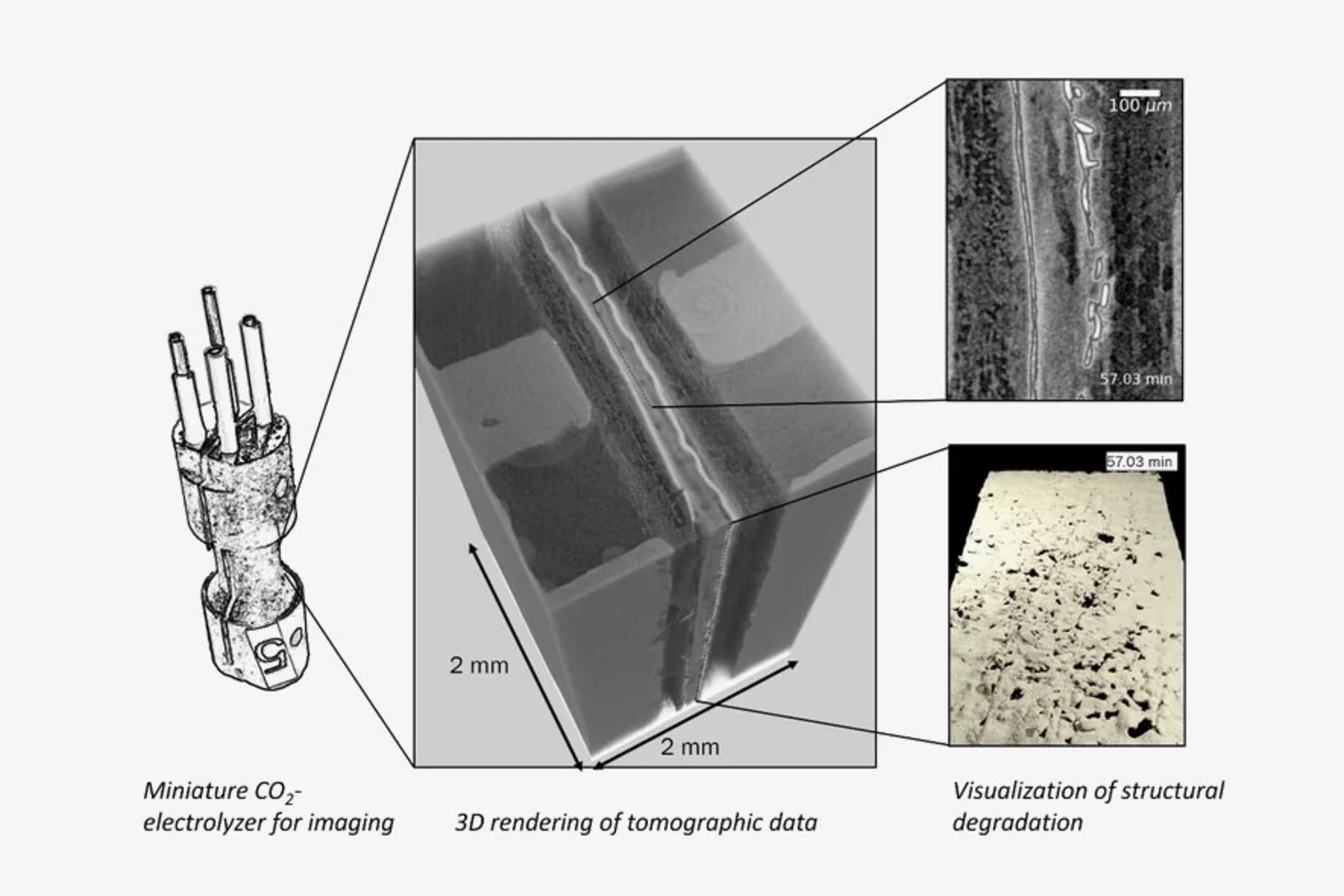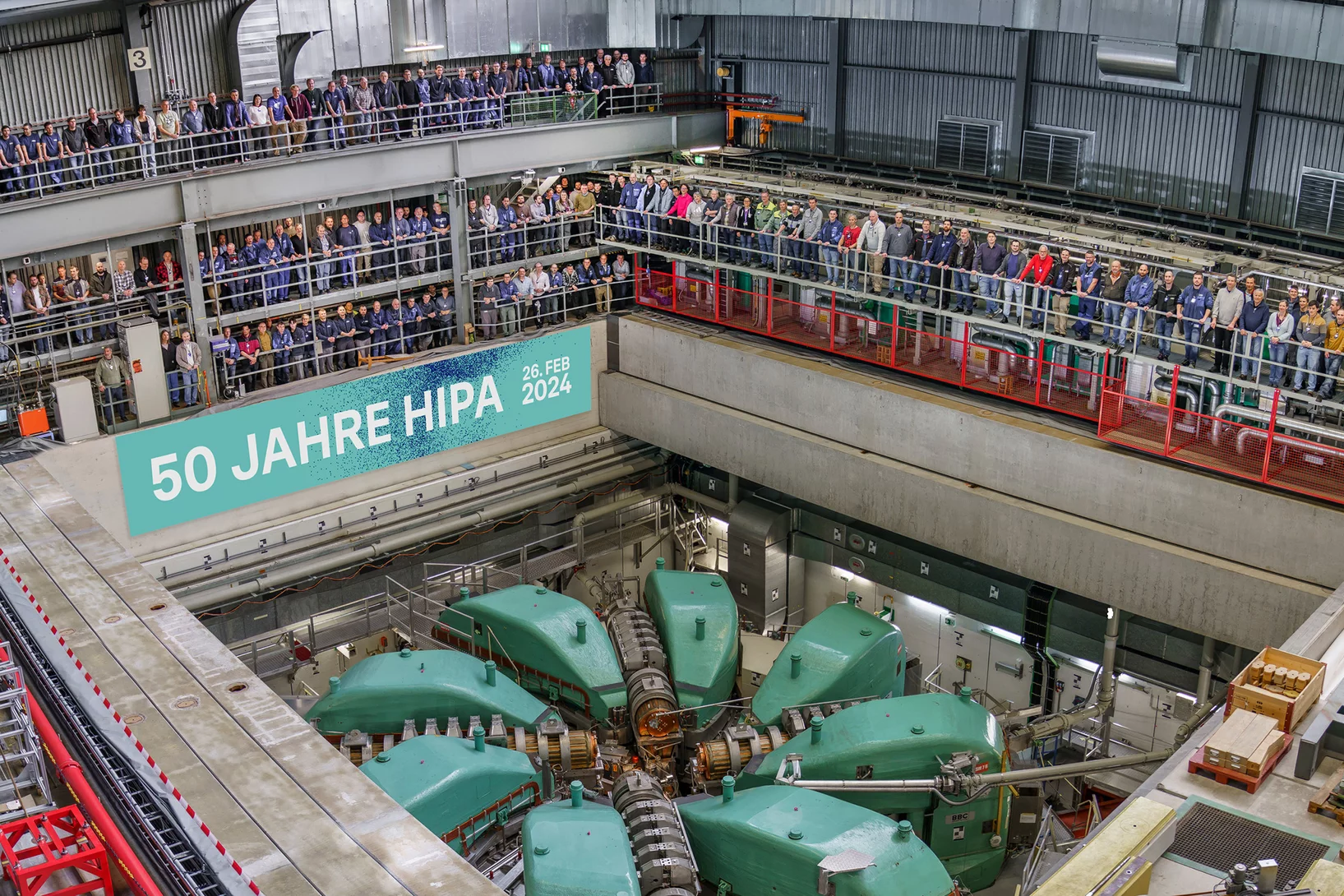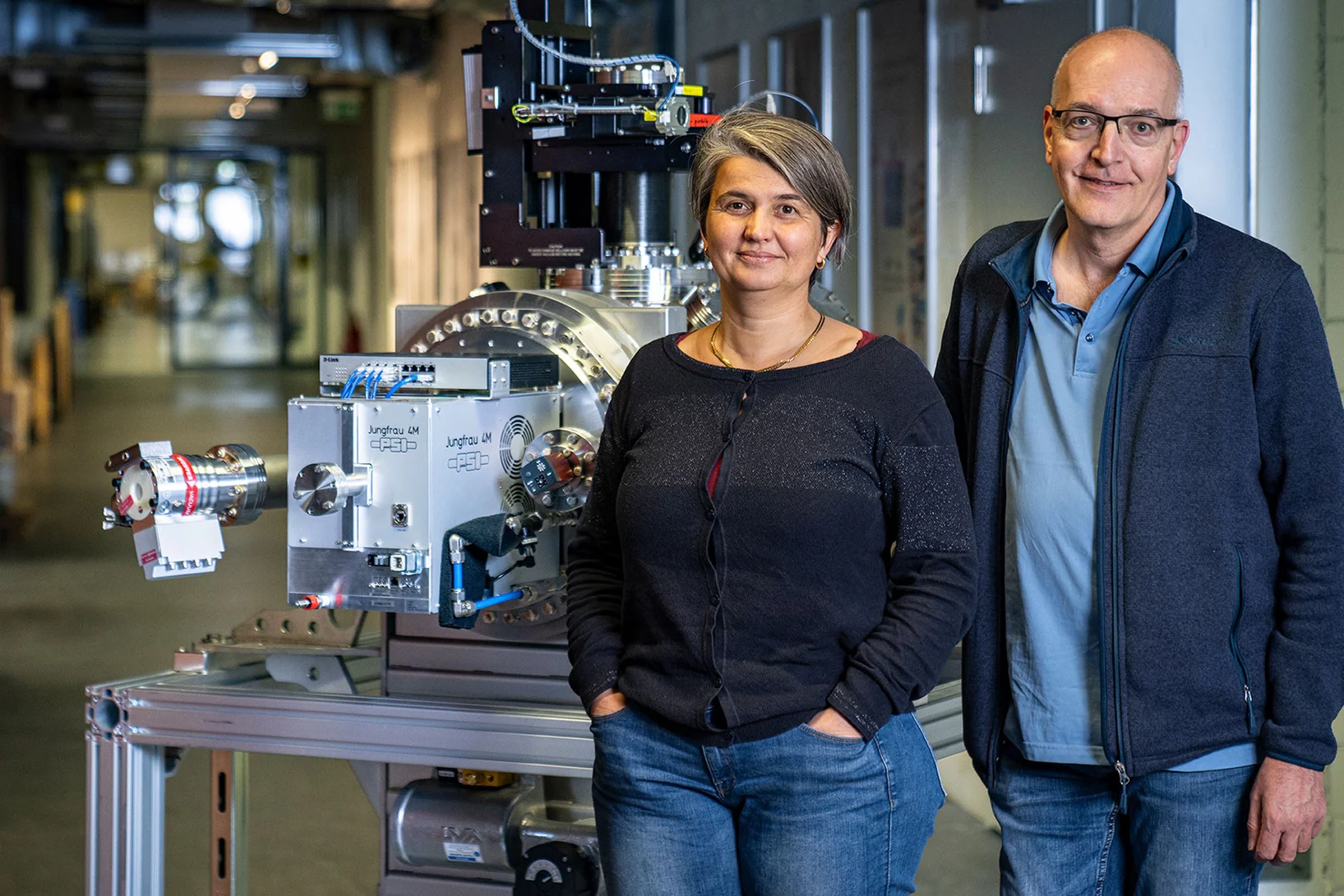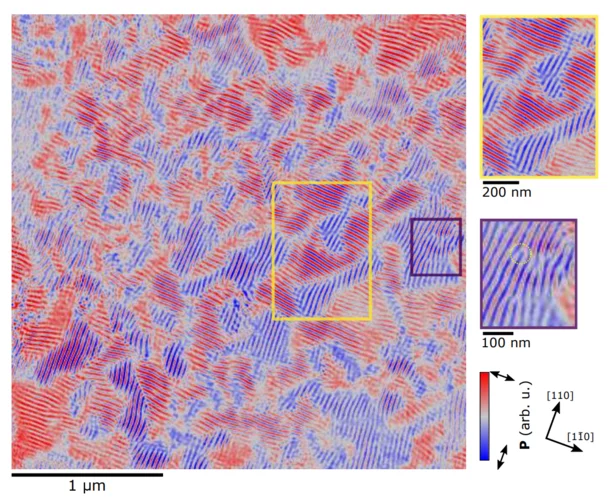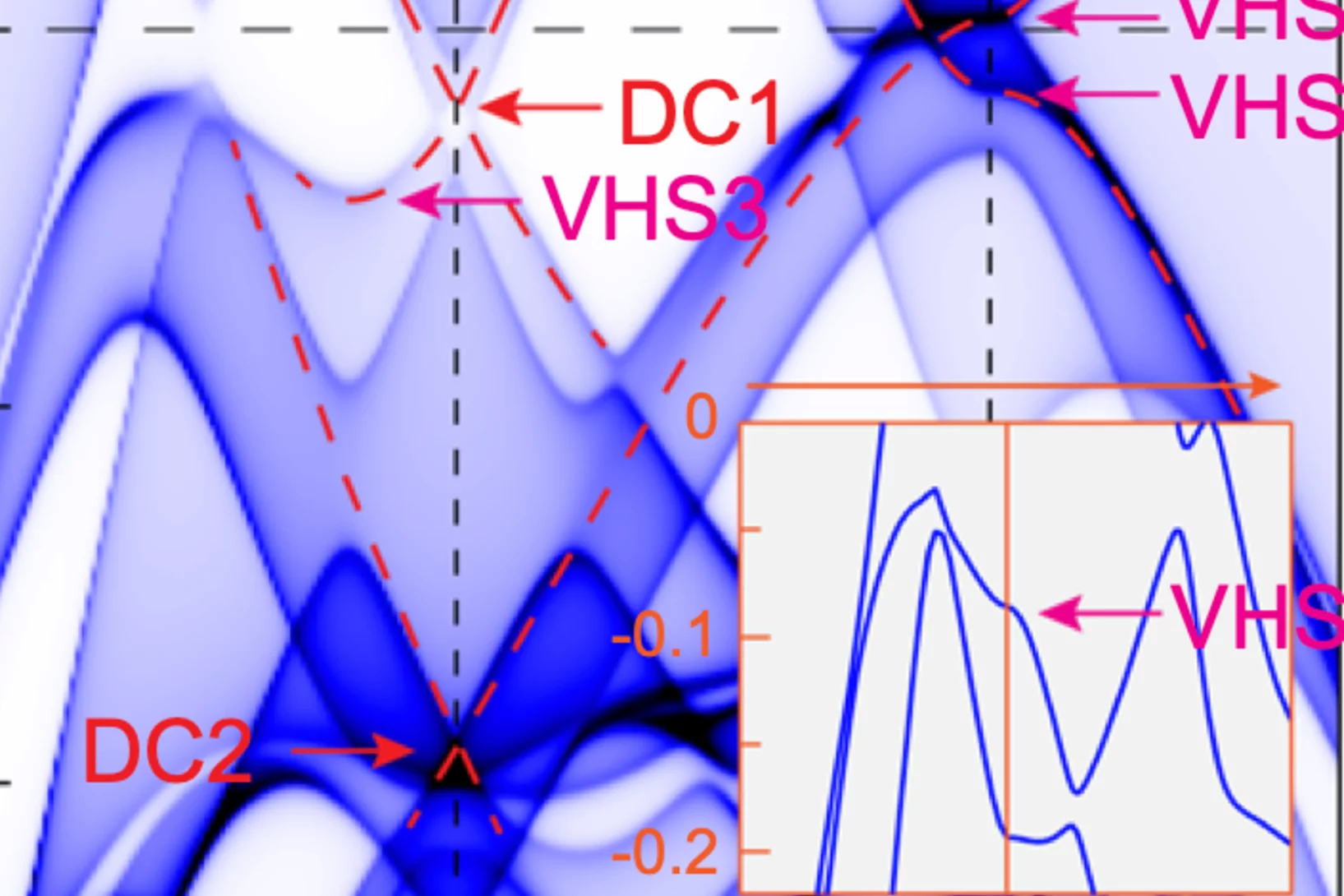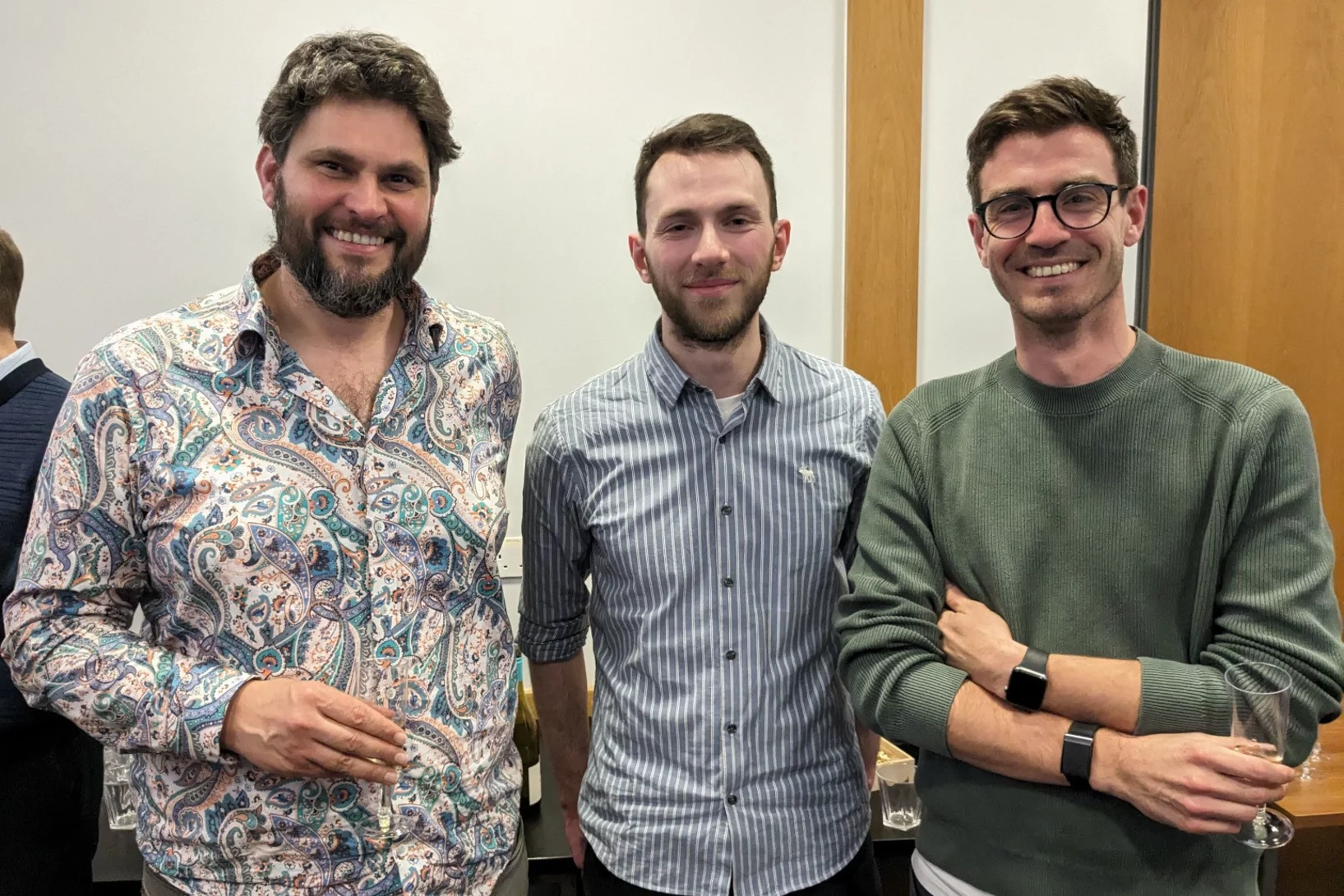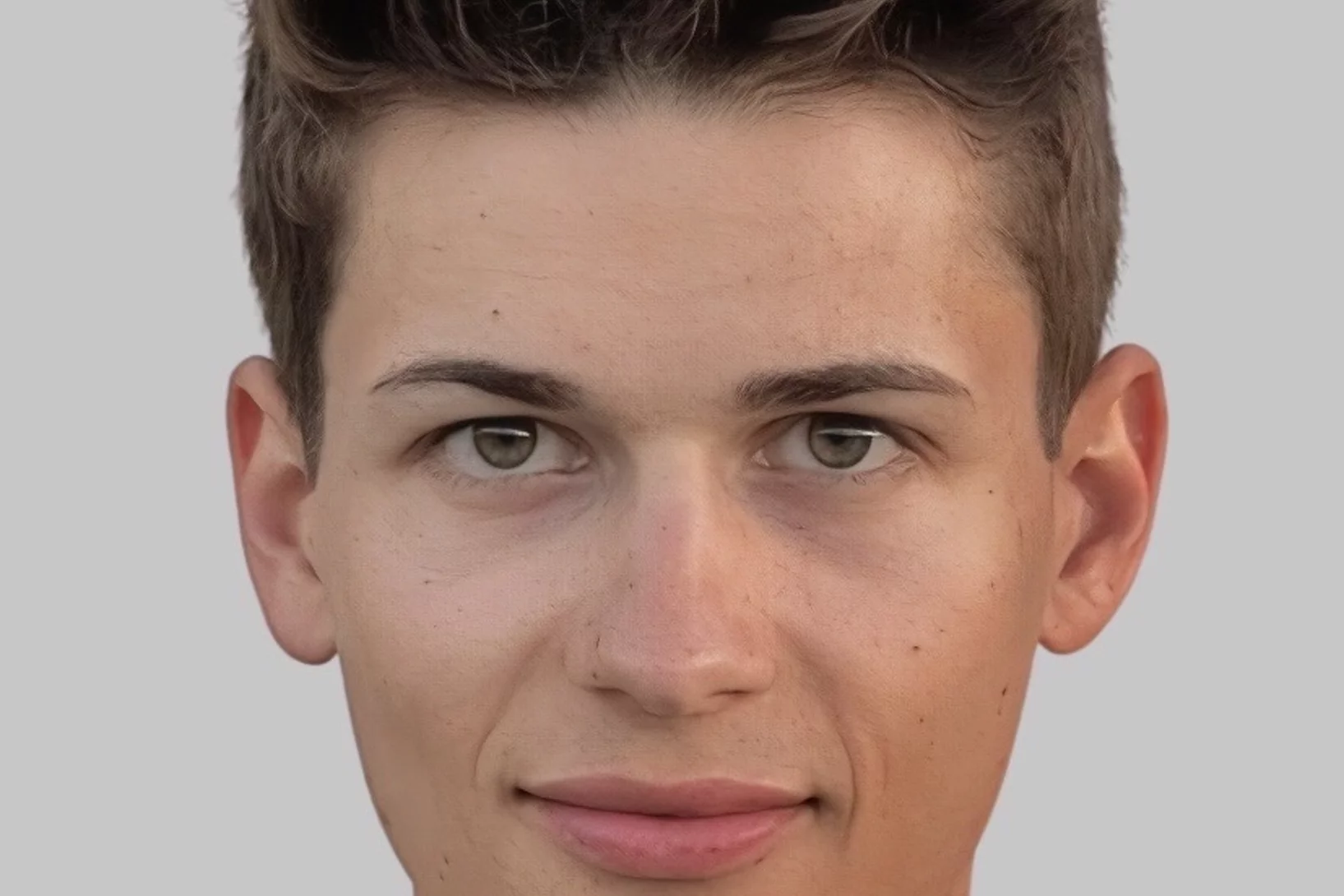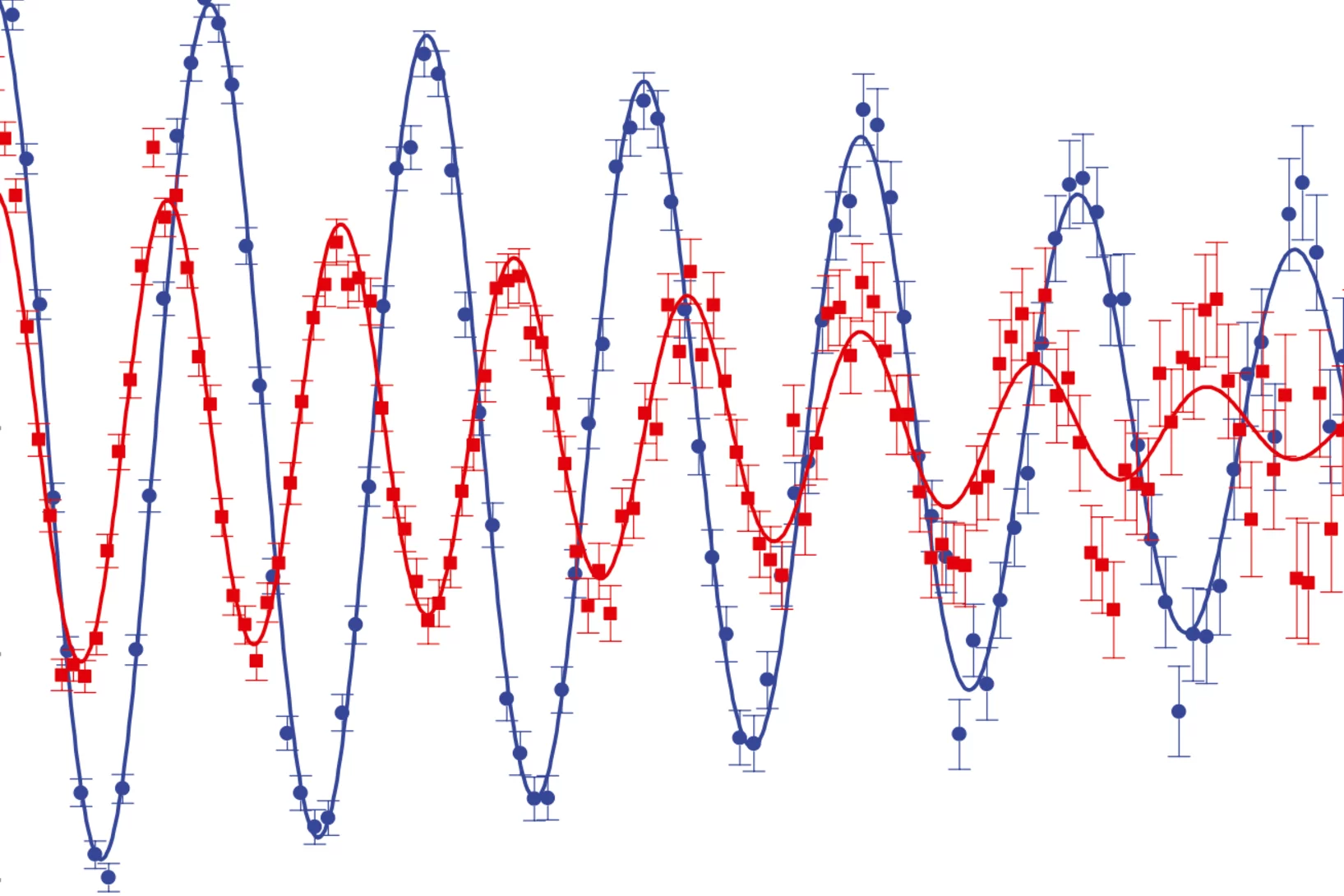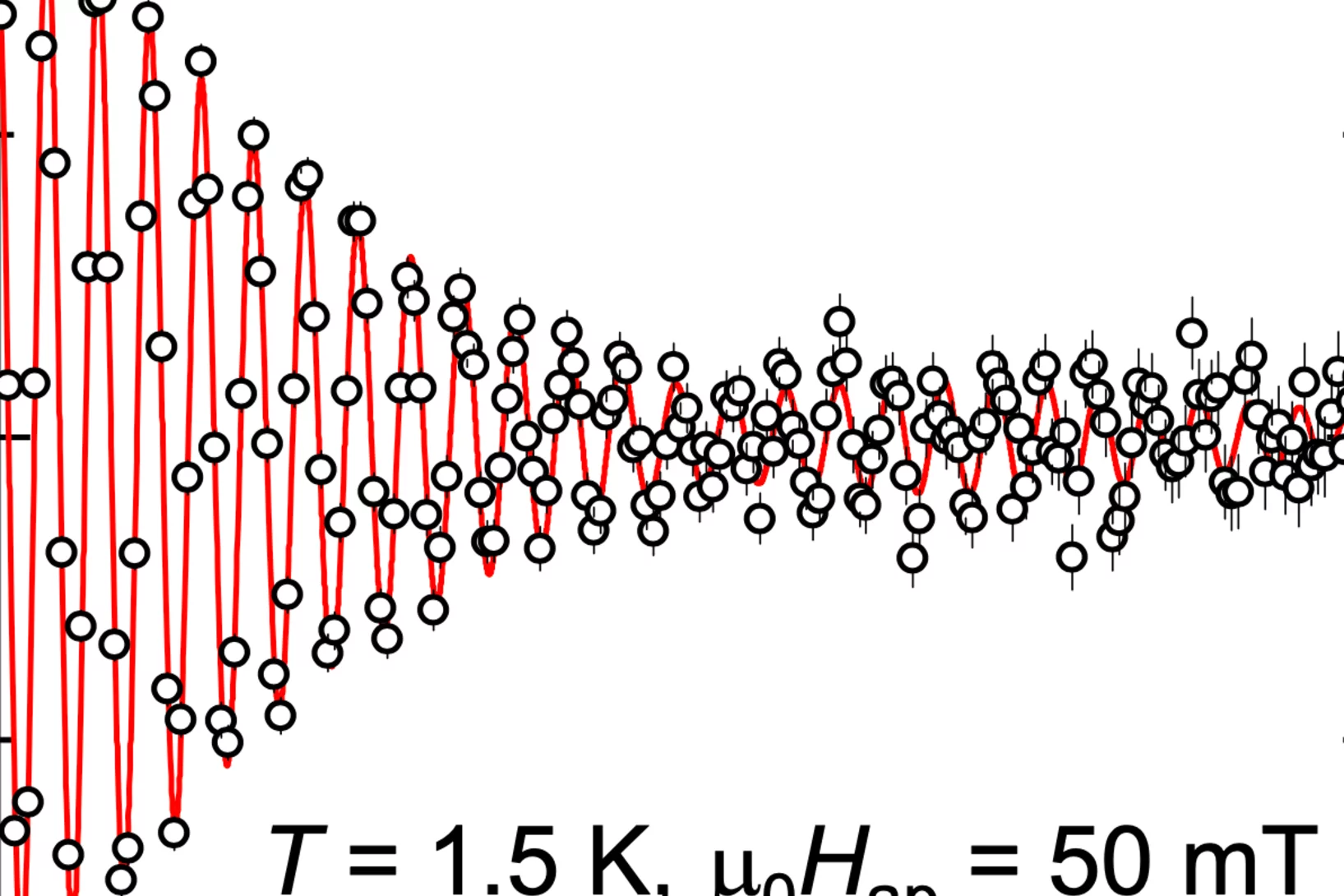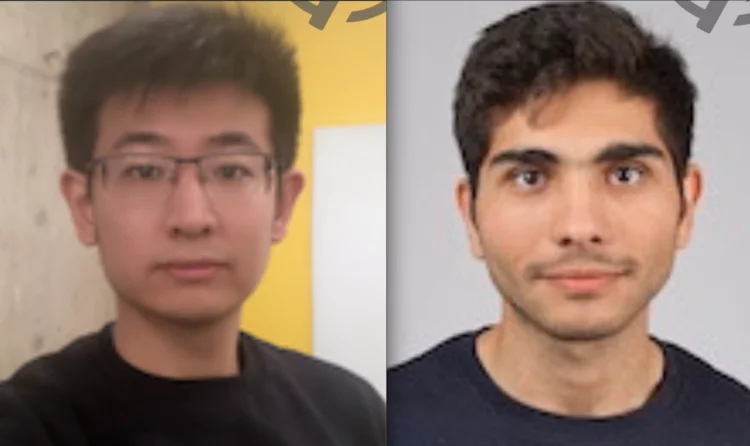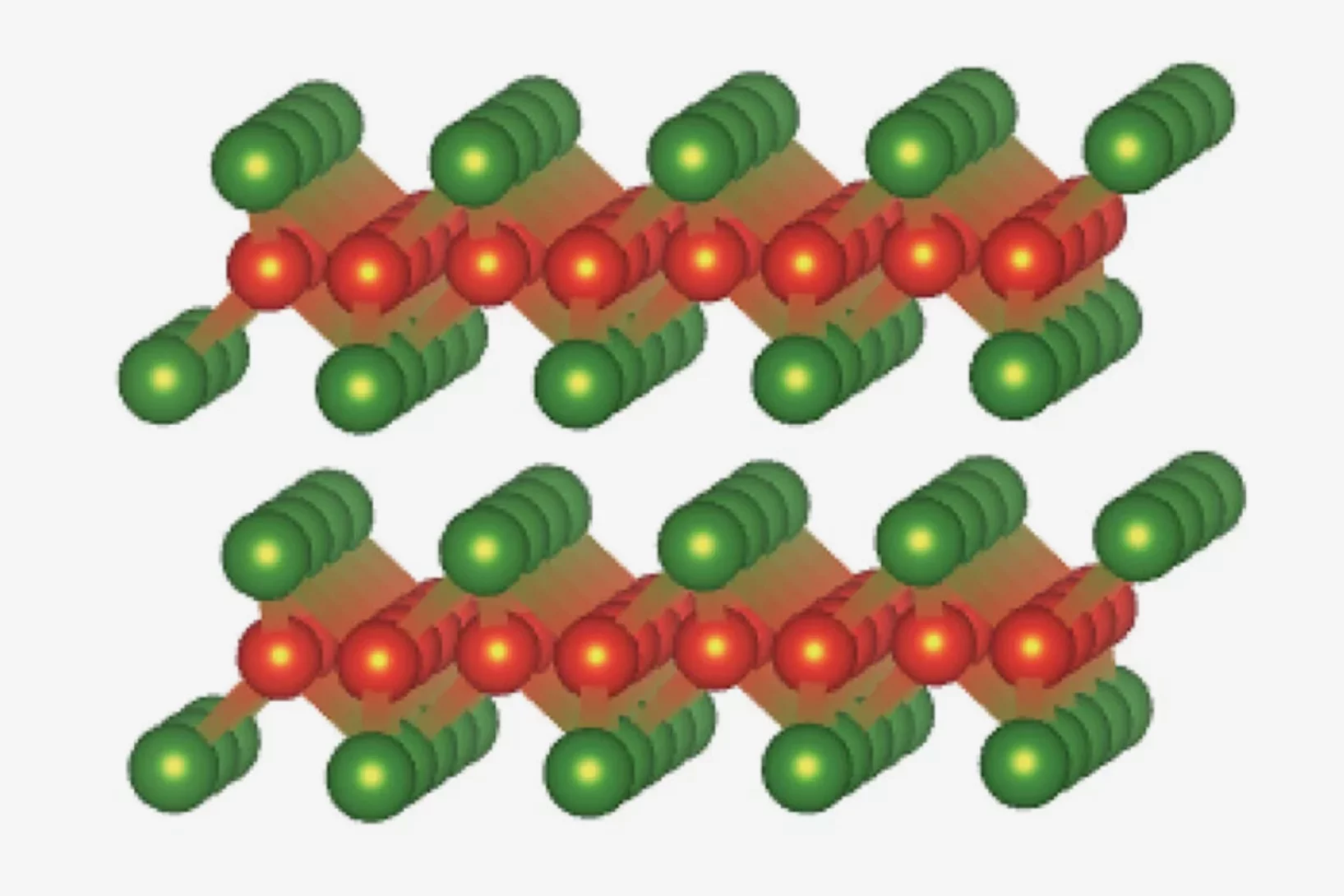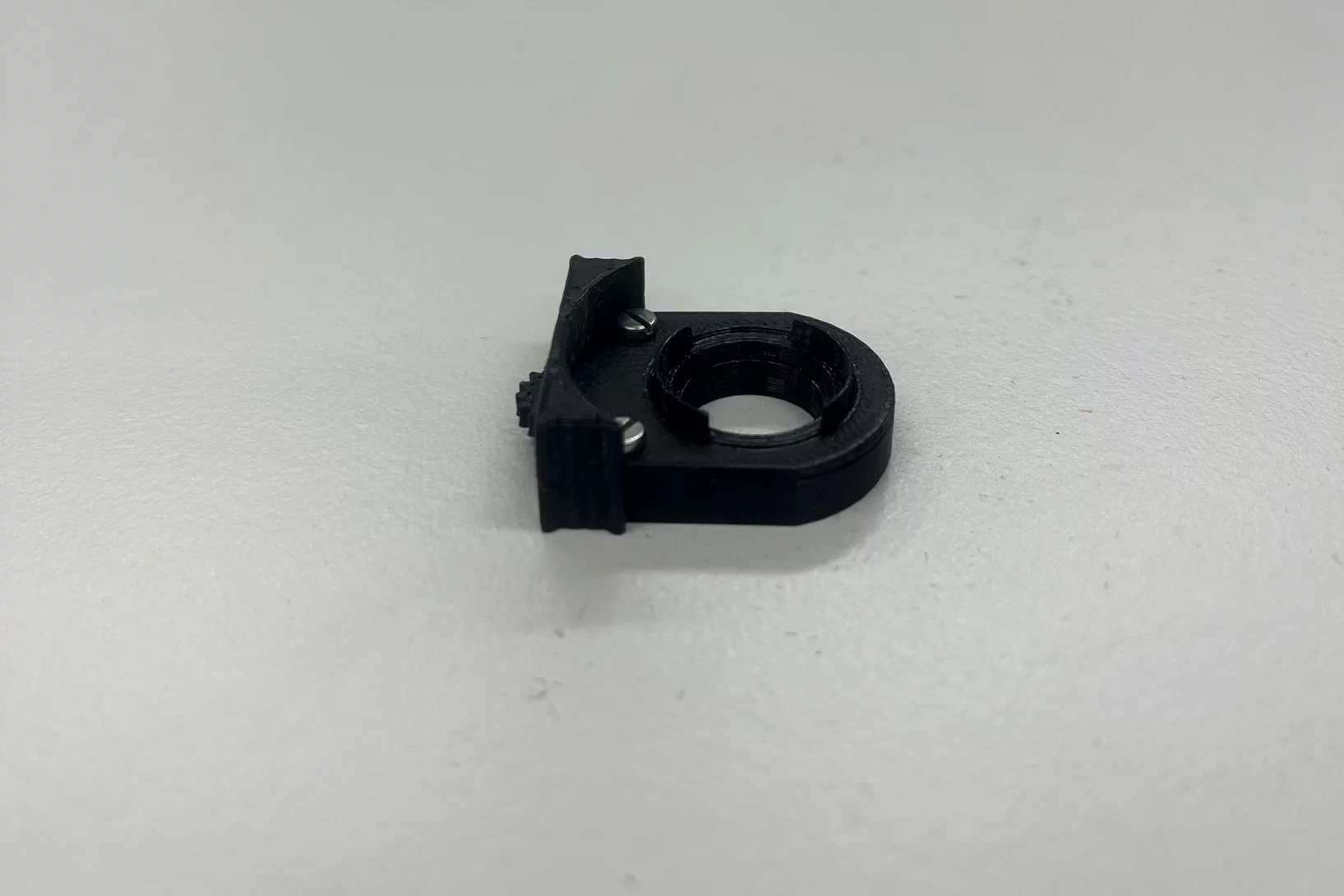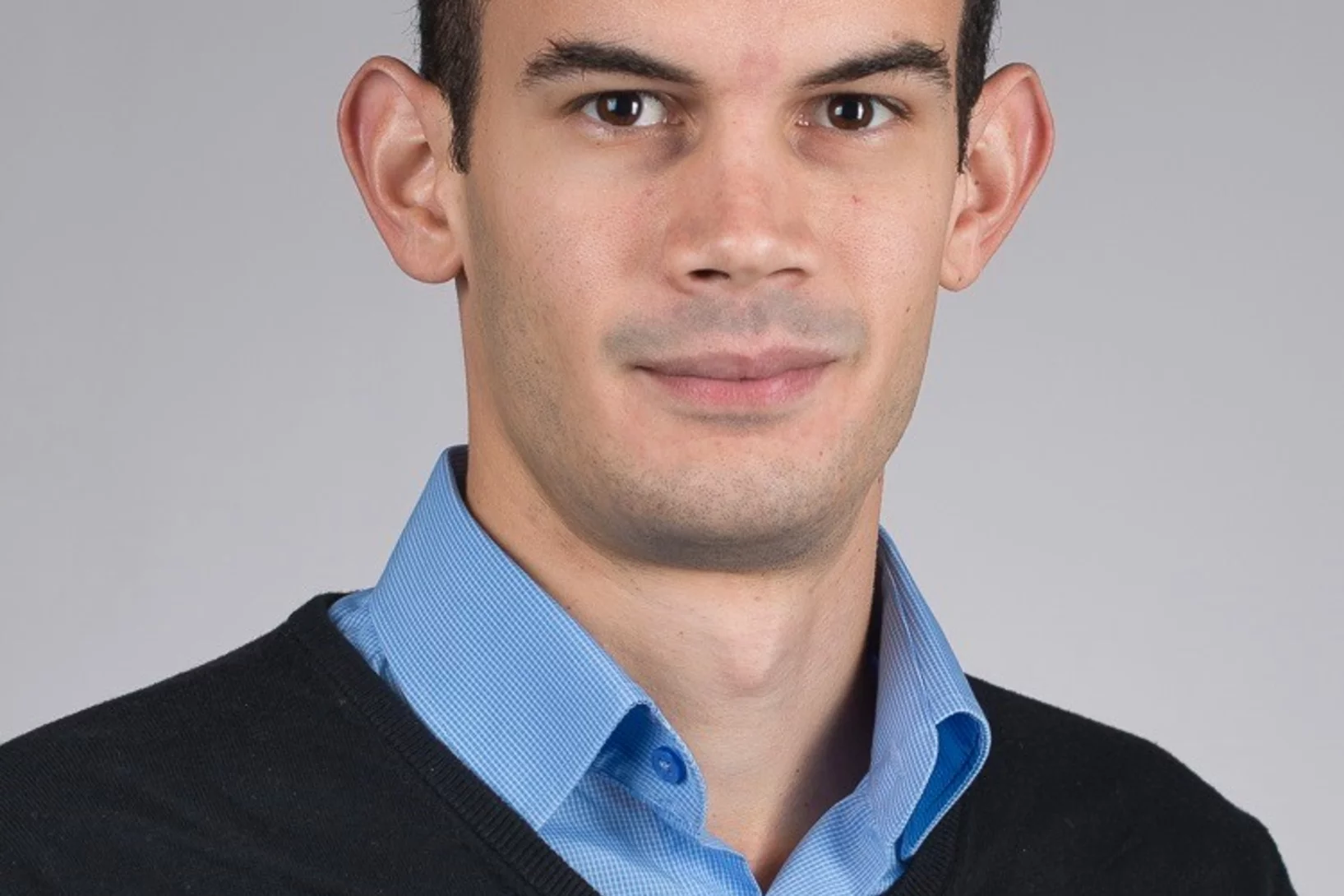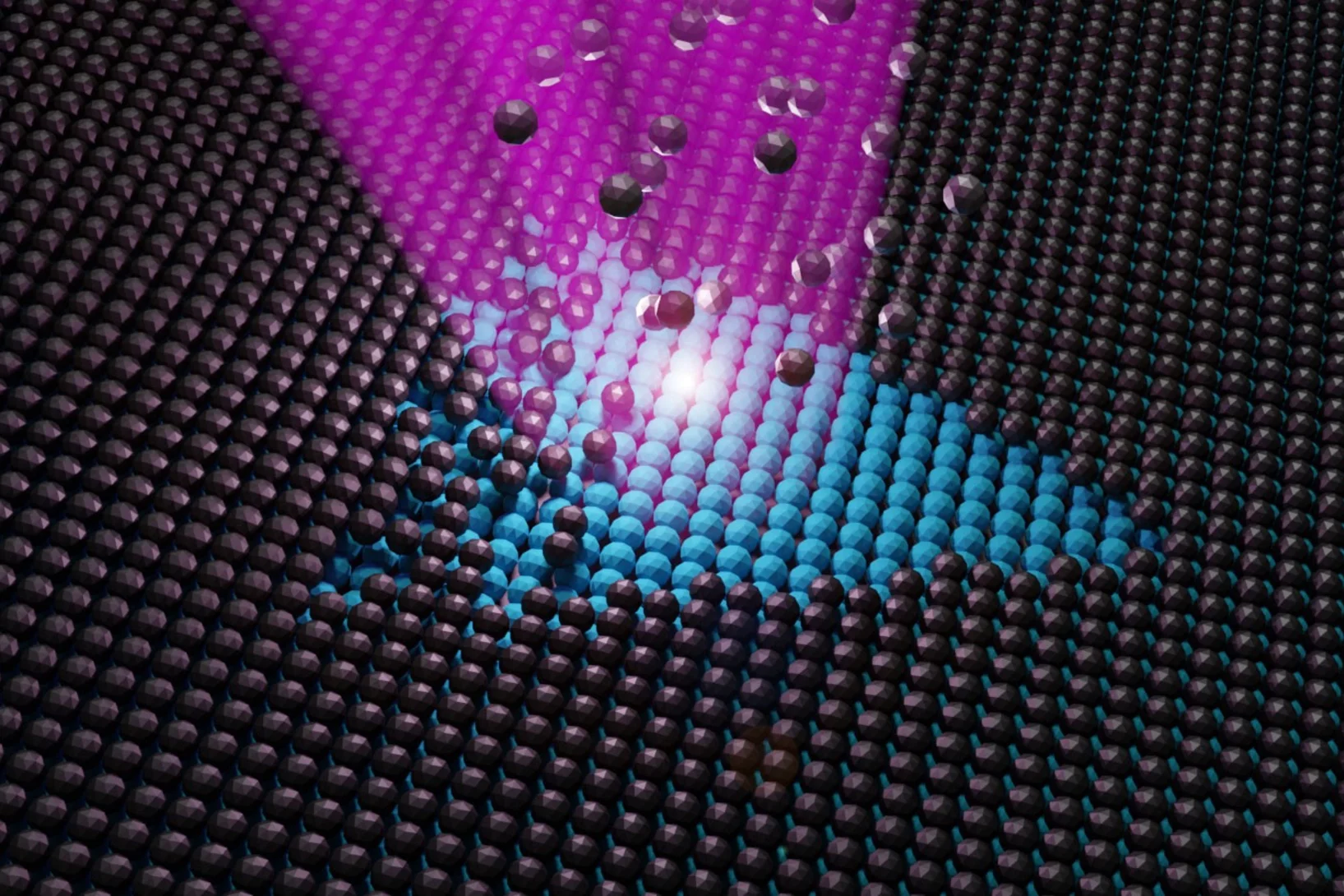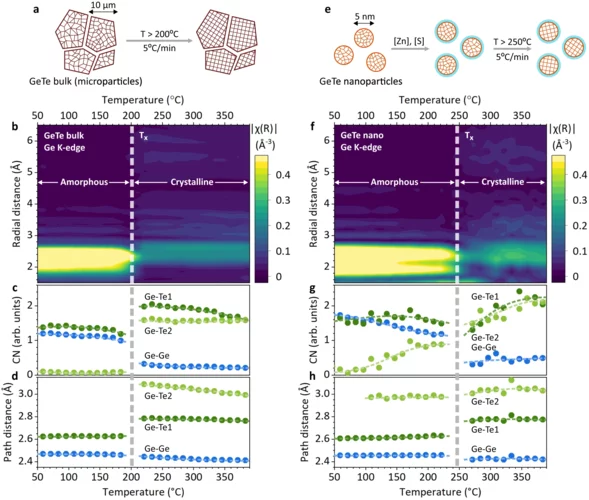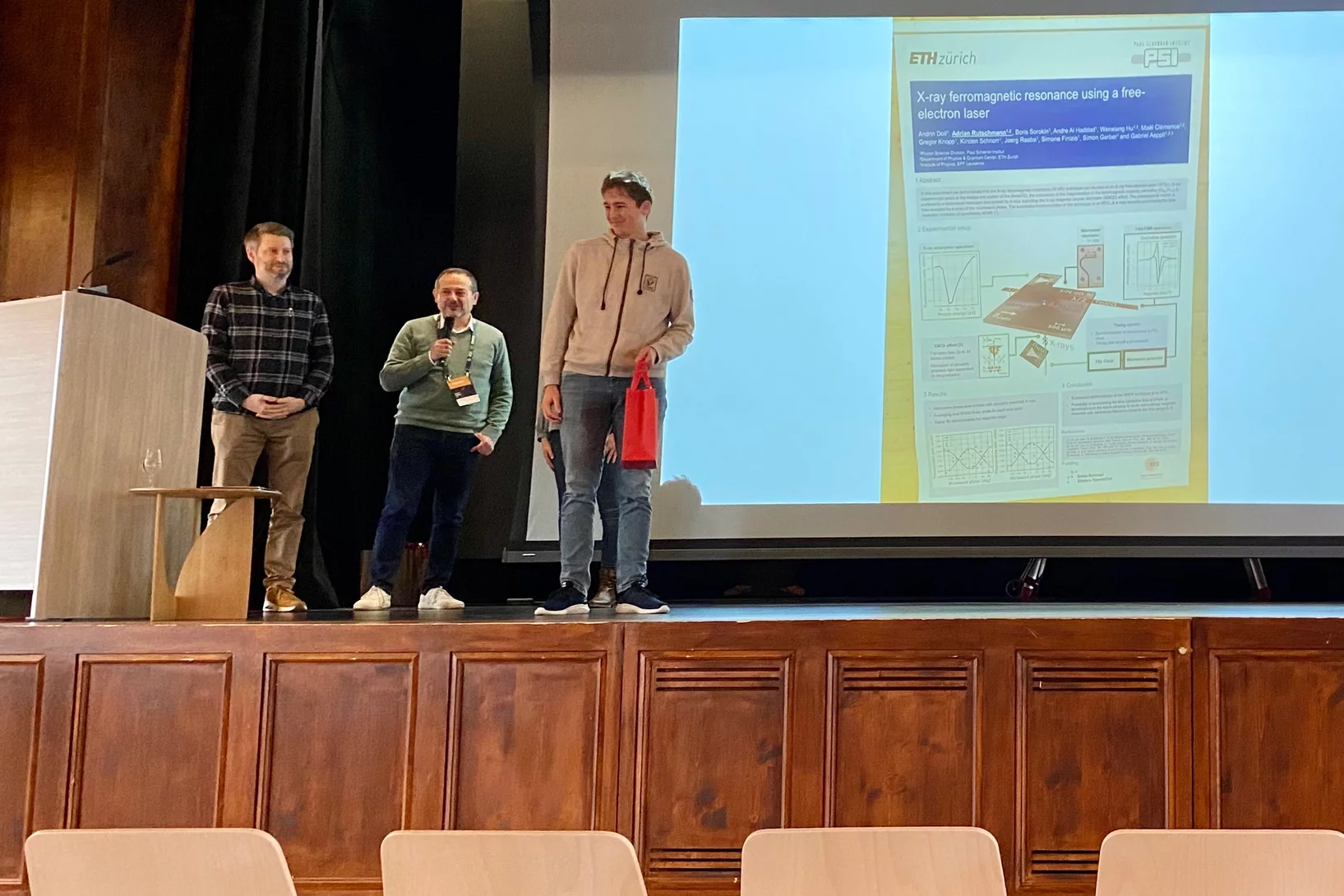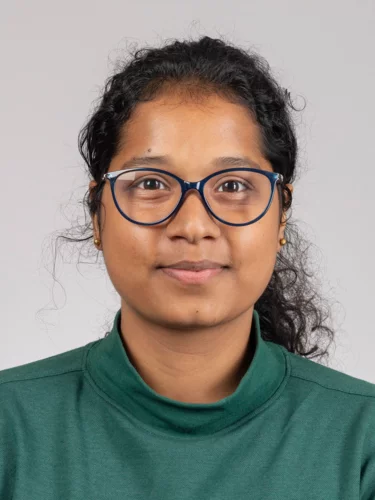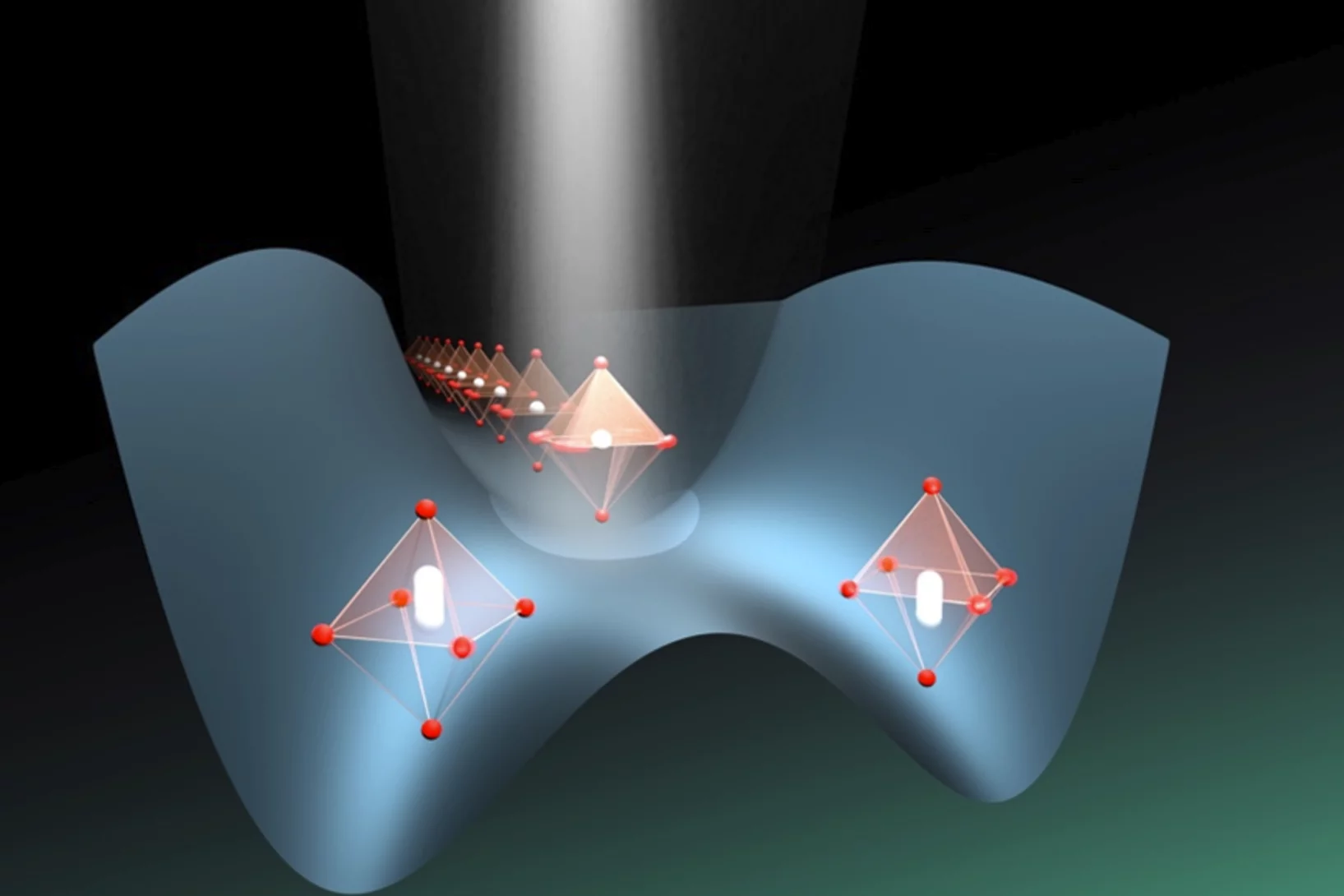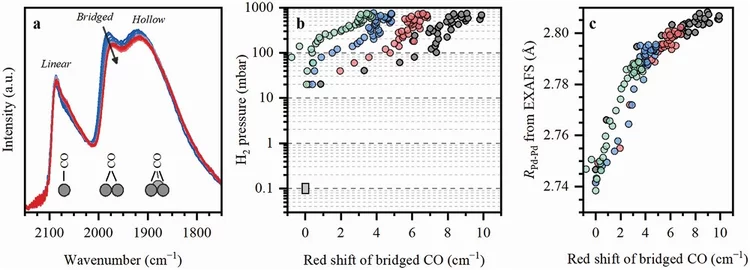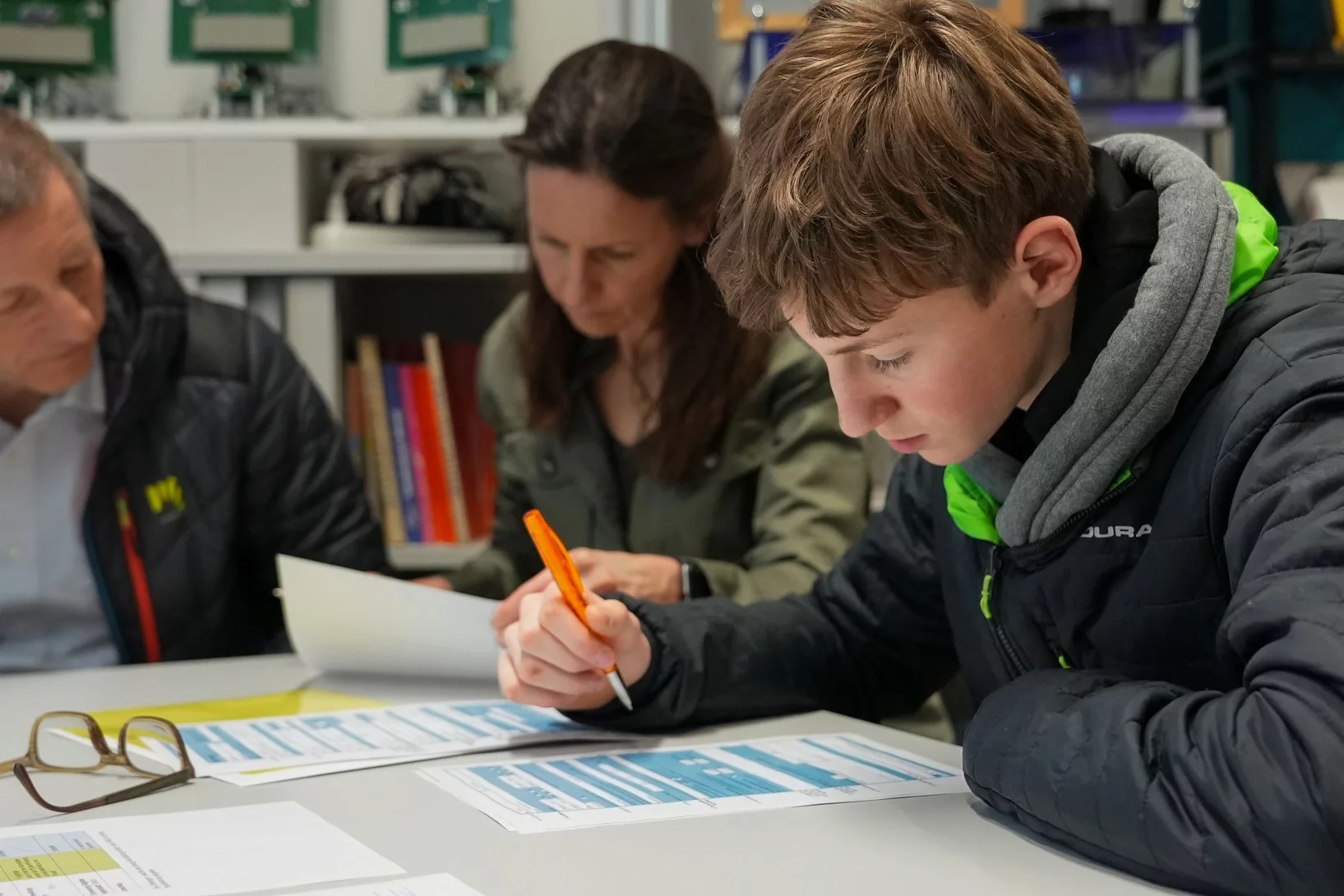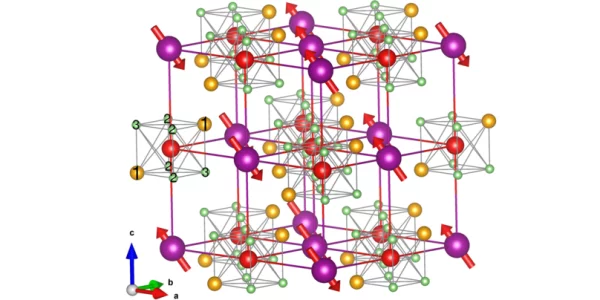Des idées qui font mouche
La recherche menée au PSI est extrêmement complexe et, par bien des aspects, souvent difficile à expliquer. Nous avons confié aux scientifiques une tâche délicate: esquisser l’idée de base de leur recherche au moyen d’un simple dessin.
Unraveling degradation processes in a bipolar membrane CO2 electrolyzer by time-resolved X-ray tomographic microscopy
Employing a bipolar ion conducting membrane (BPM) in forward bias is a convenient solution for the biggest issues in the more common anion exchange membrane (AEM) CO2 co-electrolysis: the degradation of the performance caused by carbonate salt precipitation at the cathode and the decrease of net CO2 conversion caused by the crossover of this molecule from cathode to anode also requiring energy for downstream gas separation. However, the performance and stability of this device remain largely insufficient when using such a BPM configuration. To understand the reasons for this, we performed time-resolved X-ray tomographic microscopy of an operating BPM CO2 electrolyzer. The imaging method reveals partly unexpected degradation processes that result in design recommendations for improvement.
Unveiling the Power of Flexoelectricity: A Breakthrough Research Project by Ambizione Awardee, Nikita Shepelin
The search for sustainable energy solutions is of utmost priority in modern society. Overcoming the challenges of energy conversion and storage is critical to reducing dependence on fossil fuels and harnessing renewable sources. Dielectric materials hold great promise for meeting these challenges, but current limitations prevent their widespread use.
Protons et autres particules: l’installation HIPA a 50 ans
Depuis 1974, HIPA accélère des protons pour la recherche.
Evening catering in Park Innovaare
From 04 March 2024 the new PSI restaurant in Park Innovaare offers delicious food during lunch and dinner from Monday to Friday.
Developing detectors to transform science with light (part 1)
Part I: How the Jungfrau detector went from inception to perfection to ubiquity.
Ptychographic Nanoscale Imaging of the Magnetoelectric Coupling in Freestanding Bismuth Ferrite Films
Through soft X-ray ptychographic imaging, researchers at the Swiss Light Source have directly imaged the magneto-electric coupling between the ferroelectric domain structure and the spin-cycloidal state in freestanding BiFeO3 thin films.
Phonon promoted charge density wave in topological kagome metal ScV6Sn6
Charge density wave (CDW) orders in vanadium-based kagome metals have recently received tremendous attention, yet their origin remains a topic of debate. The discovery of ScV6Sn6, a bilayer kagome metal featuring an intriguing √3 × √3 × √3 CDW order, offers a novel platform to explore the underlying mechanism behind the unconventional CDW. Here we combine ...
Ben Gayther successfully defends his thesis
Ben Gayther developed calibration algorithms, carried out detailed studies on the use of timing information in reconstruction, and contributed to the integration run at PSI. He has now successfully defended his thesis at University College London.
Welcome to LXN Nicolai Taufertshöfer
Herzlich Willkommen Nicolai Taufertshöfer im LXN!
Job-Shadowing für Akademiker*innen mit Behinderungen oder chronischer Erkrankung am PSI
Das PSI nimmt im 2024 erstmals am MyAbility Talent Programm teil. Dieses vernetzt Studierende und berufserfahrene Akademiker*innen mit Behinderungen oder chronischen Erkrankungen mit Unternehmen.
SRF material research using muon spin rotation and beta-detected nuclear magnetic resonance
Muon spins precess in transverse magnetic fields and emit a positron preferentially in the spin direction at the instant of decay, enabling muon spin rotation (μSR) as a precise probe of local magnetic fields in matter. μSR has been used to characterize superconducting radio-frequency (SRF) materials since 2010. At TRIUMF, a beam of 4.2 MeV μ+ is implanted at a material-dependent depth of approximately 150 μm. A dedicated spectrometer was developed to measure the field of first vortex penetration and pinning strength in SRF materials in parallel magnetic fields of up to 300 mT. A low-energy beam available at PSI implants μ+ at variable depth in the London layer allowing for direct measurements ...
Tuning of the flat band and its impact on superconductivity in Mo5Si3−xPx
The superconductivity in systems containing dispersionless (flat) bands is seemingly paradoxical, as traditional Bardeen-Cooper-Schrieffer theory requires an infinite enhancement of the carrier masses. However, the combination of flat and steep (dispersive) bands within the multiple band scenario might boost superconducting responses, potentially explaining high-temperature superconductivity in cuprates and metal hydrides. Here, we report ...
Altermagnetism proves its place on the magnetic family tree
Experiments at the Swiss Light Source SLS prove the existence of a new type of magnetism, with broad implications for technology and research.
Congratulations Dr. Boyang Zhou and Dr. Amirreza Hemmatzade!
Recently, Boyang Zhou (left) and Amirreza Hemmatzade (right) have successfully defended their PhD theses conducted at LNS.
11. Februar: Internationaler Tag der Frauen und Mädchen in der Wissenschaft - Förderung von Chancengerechtigkeit in der Forschung
Am 11. Februar feiern wir den Internationalen Tag der Frauen und Mädchen in der Wissenschaft. Hier erfährst du, was das PSI aktiv zur Förderung von Wissenschaftlerinnen beiträgt und wir stellen dir fünf Wissenschaftlerinnen im Kurzportrait vor!
Interface-induced superconductivity in magnetic topological insulators
One of the recipes for realizing topological superconductivity calls for interfacing a topological insulator with a superconductor. In a variant of that approach, Yi et al. grew a heterostructure consisting of layers of a magnetic topological insulator, (Bi,Sb)2Te3 doped with chromium, and antiferromagnetic iron telluride. Neither of these materials is superconducting, but iron telluride is a parent compound for a family of iron-based superconductors. Interfacing the layers led to the appearance of superconductivity in the presence of ferromagnetism and topological band structure. This combination of properties makes the heterostructure a promising, although not yet proven, platform for observing chiral topological superconductivity.
PSI au Symposium KMU Suisse de cette année!
Le 21 mars 2024, le KMU Swiss Symposium de cette année aura lieu à Baden - nous sommes heureux d'y être présents cette année encore!
Filterhalterung für ein Mikroskop
Teile effizient mittels 3D-Druck herstellen
PSI Alumni bei unseren Partnerunternehmen: Dionysios Chionis, Axpo
Der PSI Career Blog stellt PSI Alumni und ihre Karrierewege, sowie die Arbeit und Perspektiven bei unseren Partnerunternehmen vor. Heute beides in Kombination: Dionysos Chionis ist nach seinem Doktorat am PSI zu Axpo gewechselt und gibt uns einen Einblick in seine neue Rolle als Leiter der Gruppe Nuklearphysik bei der Axpo Group.
Extreme ultraviolet for scalable silicon quantum devices
Experiments at the Swiss Light Source (SLS) show the potential of extreme ultraviolet light (EUV) to make the building blocks of scalable quantum computers.
Unravelling the amorphous structure and crystallization mechanism of GeTe phase change memory materials
Here we use in-situ high-temperature x-ray absorption spectroscopy (XAS) and theoretical calculations to quantify the amorphous structure of bulk and nanoscale GeTe. Based on XAS experiments, we develop a theoretical model of the amorphous GeTe structure, consisting of a disordered fcc-type Te sublattice and randomly arranged chains of Ge atoms in a tetrahedral coordination.
Swiss Quantum Days Poster Prize for Adrian Rutschmann
Congratulations Adrian Rutschmann for winning a prize at the Swiss Quantum Days 2024 for a poster on our recent X-ray-detected ferromagnetic resonance experiment at SwissFEL.
Welcome to Archana Ramakrishnan!
A warm welcome to Archana Ramakrishnan.
She will work as a PhD student on the reFuel.ch project.
Short x-ray pulses reveal the source of light-induced ferroelectricity
Ultrafast measurements of the fluctuating atomic positions in the quantum paraelectric SrTiO3 after mid-infrared light excitation, reveal details about the creation of the material’s ferroelectric state.
Insights into the superior oxygen evolution reaction activity of CoOx/CeO2 composite electrocatalyst
CeO2 significantly enhances the oxygen evolution reaction (OER) activity of CoOx, although the mechanism behind this synergy is still unclear. Here, operando hard X-ray absorption spectroscopy (hXAS) is applied to monitor the Co-K edge and Ce L3 edge in CoOx/CeO2 to shed light on the evolution of Co and Ce oxidation states during OER. In addition, ex situ soft XAS (sXAS) characterizations provide information on the irreversible surface-specific transformations of the Co L3 edge as well as the O K edge.
Machine Learning for Quantitative Structural Information from Infrared Spectra: The Case of Palladium Hydride
Infrared spectroscopy (IR) is a widely used technique enabling to identify specific functional groups in the molecule of interest based on their characteristic vibrational modes or the presence of a specific adsorption site based on the characteristic vibrational mode of an adsorbed probe molecule. The interpretation of an IR spectrum is generally carried out within a fingerprint paradigm by comparing the observed spectral features with the features of known references or theoretical calculations. This work demonstrates a method for extracting quantitative structural information beyond this approach by application of machine learning (ML) algorithms.
Vertragsunterzeichnung 2024
Ein herzliches Willkommen an unsere zukünftigen Lernenden!
La fonte d’un glacier détruit une importante archive de données climatiques
Des scientifiques du PSI ont analysé deux carottes de glace prélevées sur le glacier de Corbassière au Grand Combin.
"Magnetostriction-Driven Muon Localization in an Antiferromagnetic Oxide" published in Phys. Rev. Lett.
A study involving PSI scientists from the LMS lab, and just published in Physical Review Letters has found that in manganese oxide, a textbook antiferromagnetic material, the site of an implanted spin-polarized muon is not well identified, but can change due to a previously neglected effect: magnetostriction.


